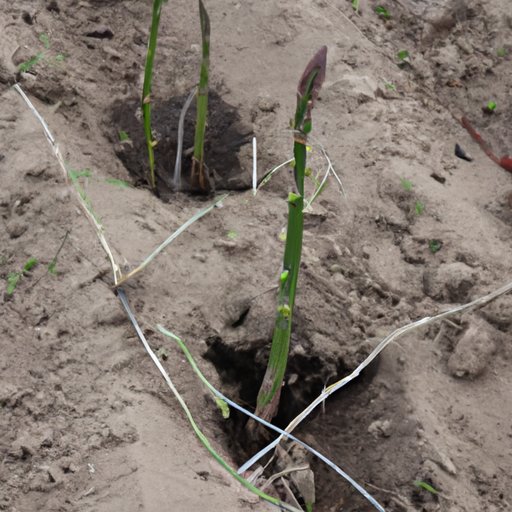Introduction
Asparagus, a perennial vegetable known for its tender spears and delicious flavor, has gained popularity in recent years as more people discover the joys of growing their own food. Not only is asparagus versatile and nutritious, but it is also easy to grow with the right knowledge and care. In this article, we will explore how to grow asparagus from start to finish, including preparing the soil, choosing the right cultivars, caring for the plants, and troubleshooting common problems.
Preparing the Soil for Planting Asparagus
Before planting asparagus, it is essential to prepare the soil properly. Asparagus thrives in well-draining soil with a pH between 6.0 and 7.0. Start by testing your soil pH, which you can do with a soil testing kit available at most garden centers. If your soil pH is too low, add lime to raise it, and if it is too high, add sulfur to lower it.
Once you have the right pH, work compost or well-aged manure into the soil to improve its nutrient content and organic matter. Loosen and till the soil to a depth of about 8-12 inches. Asparagus prefers loose, fertile soil that is rich in nutrients. Avoid heavy clay soils or compacted soil, which can cause drainage problems.
Choosing the Right Asparagus Cultivars for Different Climates
Asparagus comes in many varieties, so choose the right cultivars based on your climate and location. Asparagus is hardy in USDA zones 3-9 and grows best in areas with mild winters and cool springs. Some popular cultivars include Jersey Knight, Mary Washington, and Purple Passion. Try to find a reputable source for asparagus crowns, such as a local garden center or nursery, to ensure you get high-quality plants.
Tips on Weed Control
Weed control is essential for a successful asparagus crop. Weeds can compete with plants for nutrients and water, leading to stunted growth and a lower yield. To control weeds, use organic mulch such as straw or leaves, which will suppress weed growth and conserve soil moisture. Hand-weed the area around the plants frequently to remove any weeds that sprout up.
Spacing and Caring for Asparagus Plants
Asparagus plants need enough space to grow and develop a robust root system. Plant asparagus crowns about 18-24 inches apart in rows spaced 3-4 feet apart. Water the crowns immediately after planting and keep the soil moist. Once the spears start to appear, increase watering to about one inch per week. Fertilize the plants in the spring and again in the fall with a balanced fertilizer with equal amounts of nitrogen, phosphorus, and potassium. When the plants are dormant in the winter, cut down the ferns to about 2 inches above the ground.
Harvesting and Preparing Asparagus
Asparagus is ready to harvest after the second or third year of planting, depending on the cultivar. Harvest spears when they are 6-8 inches tall and snap off the spear at the soil level. Be careful not to damage the emerging spears. Harvest all spears that appear for about eight weeks, then stop harvesting to allow the ferns to grow and store energy for the next year’s crop.
To prepare asparagus for cooking, wash the spears and snap off the fibrous ends. Asparagus can be steamed, roasted, grilled, or sautéed. It can be served hot or cold and pairs well with a variety of seasonings, herbs, and sauces.
Troubleshooting Common Problems
Asparagus is relatively low-maintenance, but problems may arise if the plants are not adequately cared for. Common issues include pests such as aphids or beetles, fungal diseases such as rust or crown rot, and environmental factors such as frost damage. To prevent these issues, keep the area around the plants clean and remove any diseased or damaged foliage promptly. Consider planting marigolds, which deter pests, around the asparagus plants.
Conclusion
Growing asparagus is a fun and rewarding way to add fresh produce to your diet. With a bit of planning and care, you can enjoy a bountiful asparagus harvest year after year. Remember to prepare the soil correctly, choose the right cultivars, control weeds, space and care for the plants properly, and harvest and prepare the spears correctly. If problems arise, troubleshoot them promptly to keep your plants healthy.
